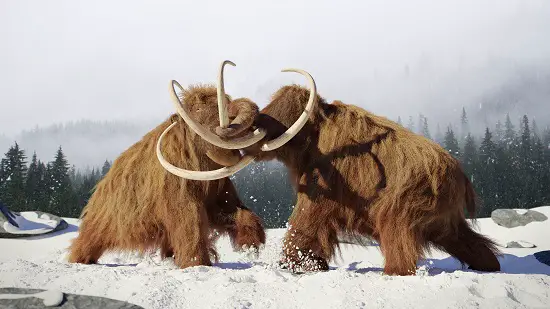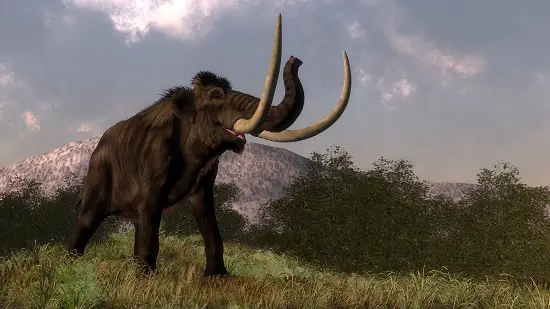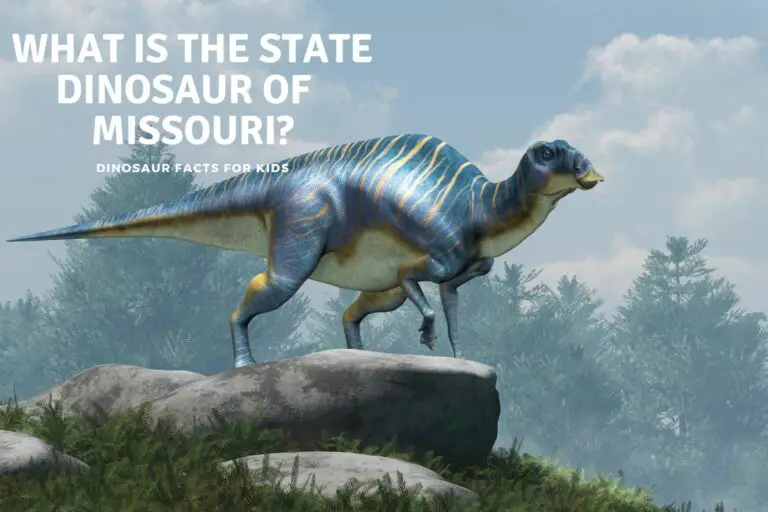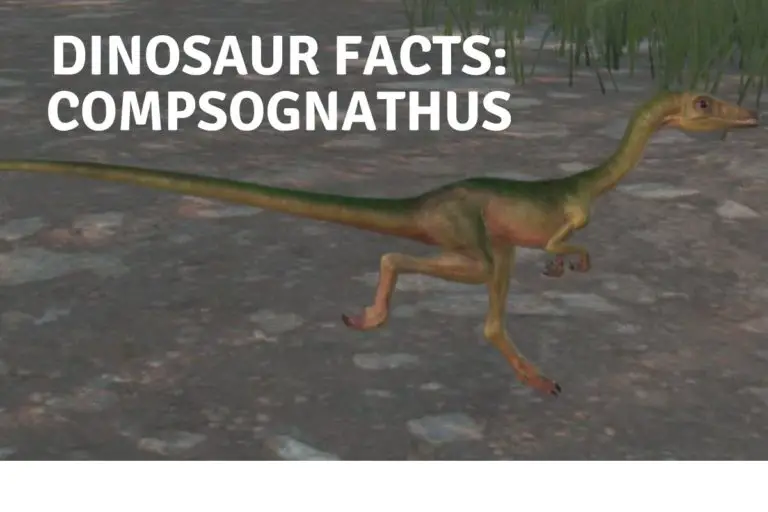What are The Differences Between Mammoths and Elephants?
Mammoths and elephants, though distant relatives, share many similarities, but their differences reveal interesting adaptations to their environments. Looking into these differences helps both our understanding of the natural world and also highlights the impact of environmental changes – something we think we should all learn a little more about nowadays!
Mammoths had shaggy coats, smaller ears, and longer curved tusks, while modern elephants feature elongated trunks, shorter straight tusks, and large ears for warm climates. Adaptations reflect environment-driven differences.
We take a look at both ther similarities and differences in the article below, and even take a look at the biggest elephant ever to live the Paleoloxodon naumadicus.

Mammoths: A Brief History
Origin and Evolution
Mammoths belong to the Elephantidae family, which also, unsurprisingly, includes modern elephants.
They evolved from an ancestral species in Africa around 6 million years ago, with the mammoth lineage diverging from the lineage that led to modern elephants sometime later.
The first true mammoths likely appeared around 5 million years ago.
Mammoth Distribution
From their origins in Africa, mammoths migrated to various parts of the world:
- Eurasia: By about 3 million years ago, mammoths had reached Europe and continued to spread across the continent.
- North America: Mammoths crossed into North America from Eurasia around 1.5 million years ago, using the Bering land bridge.
- South America: Some mammoths, specifically the Columbian mammoth, eventually ventured into South America.
Species of Mammoth
Several species of mammoths evolved over time, adapted to various habitats and climates:
- Woolly Mammoth (Mammuthus primigenius): Adapted to cold environments, this species lived in the northern parts of North America and Eurasia. They had long, shaggy hair and a hump of fat on their backs to help them survive the frigid conditions.
- Columbian Mammoth (Mammuthus columbi): Inhabitants of warmer regions of North America.
- Steppe or Imperial Mammoth (Mammuthus trogontherii): Lived across northern Eurasia.
- Southern Mammoth (Mammuthus meridionalis): Earlier species that inhabited parts of Europe and Asia.
- There were also other less-known species that lived in various regions.

Mammoth Extinction
The last mammoths disappeared around 4,000 years ago. While the exact causes of their extinction remain a topic of debate, it’s believed that a combination of factors led to their demise:
- Climate Change: The end of the last Ice Age brought about significant environmental shifts which could have affected mammoth habitats and food sources.
- Human Hunting: Evidence suggests that humans hunted mammoths, and while it’s debated how significant this was as a factor, overhunting could have played a role, especially for isolated populations.
- Habitat Fragmentation: As forests expanded with the warming climate, mammoth habitats might have become fragmented, leading to isolated populations that were more vulnerable.
Modern Rediscovery:
The frozen landscapes of Siberia and Alaska have preserved some mammoth bodies, allowing scientists a unique opportunity to study these extinct creatures.
This has led to discussions and debates about the potential (though controversial) “de-extinction” of the mammoth through cloning or genetic engineering.
Differences between Mammoths and Elephants
Mammoths and elephants have differences that show their different evolutionary journeys and how they adapted to their environments, it’s not just that big shaggy coat!
Mammoths, although some species could be larger than african elephants, were mostly comparable in size to their modern cousins.
The most obvious differences between the two were the long, shaggy coats that mammoth sported which shielded them from the harsh cold. This thick fur served as a natural insulation layer, keeping them warm in the icy environments they inhabited.
Tusks, although present in both species, had notable differences. Mammoths often possessed elongated, curved tusks that could extend to impressive lengths, potentially used for digging in the snow or defense.
Modern elephant tusks tend to be shorter and straighter, serving various purposes including foraging and social interactions.
Another important difference is with the ears between the two species. Mammoths, adapted to colder climates, had relatively small ears that helped reduce heat loss and maintain body temperature in frigid conditions.
Elephants’ larger ears play a important role in keeping cool, rather than retaining heat, and their size and the flapping helps them keep their bodies from overheating.
Mammoths were mostly evolved for living in cold climates, hence the think coat of hair, while modern elephants are now found in much hotter areas.
So while very similar and very related there are differences between mammoths and modern elephants, just like even today there are differences between Asian and African Elephants. All have adapted to their environment.
| Aspect | Mammoth | Elephant |
|---|---|---|
| Taxonomy | Extinct genus within Proboscidea order | Living genera within Proboscidea order |
| Size | A range some were slightly taller / bigger than most modern elephants others were smaller. | Varied sizes; largest land mammals today |
| Habitat | Thrived in Ice Age environments | Inhabit a wide range of ecosystems |
| Coat | Long, shaggy fur adapted to cold climates | Sparse hair covering, adapted to warmth |
| Trunk | Shorter, less dexterous trunk | Long, versatile trunk for various tasks |
| Tusks | Curved, lengthy tusks in both males and females | Shorter, straight tusks, mostly in males |
| Ears | Smaller ears, possibly adapted to cold climates | Large ears to regulate body temperature |
| Behavior | Complex social structures in herds | Hierarchical social groups and behaviors |
| Extinction | Extinct due to climate and habitat changes | Conservation efforts due to human impact |
| Cultural Significance | Depicted in ancient art and mythologies | Revered and symbolize various meanings |

Were Mammoths Bigger than Elephants?
Mammoths and elephants are closely related, and both were/are large terrestrial mammals. The size comparison, however, depends on the specific species of mammoths and elephants being compared.
- Woolly Mammoth (Mammuthus primigenius): The woolly mammoth, which is the most famous and the one most people think of when they hear “mammoth,” was about the same size or slightly smaller than many of today’s African elephants. Adult male woolly mammoths weighed in the range of 4.5 to 6.8 metric tons, whereas an adult male African bush elephant, the largest living terrestrial animal today, can weigh between 4 to 10 metric tons.
- Imperial or Steppe Mammoth (Mammuthus trogontherii): This mammoth species is believed to be one of the largest mammoth species, with some estimates suggesting they weighed up to 12 metric tons.
- Columbian Mammoth (Mammuthus columbi): Found mainly in North America, these mammoths were larger than woolly mammoths but smaller than the imperial mammoths. They weighed between 8 to 10 metric tons.
- African Elephants: As mentioned, the African bush elephant (Loxodonta africana) can weigh between 4 to 10 metric tons, with males typically being larger. The African forest elephant (Loxodonta cyclotis), on the other hand, is smaller, with adult males weighing between 2 to 4.5 metric tons.
- Asian Elephant (Elephas maximus): Typically smaller than African elephants, the Asian elephant weighs between 2 to 5.5 metric tons for adult males.
Some mammoth species were larger than modern elephants, while others were smaller or comparable in size.
It’s also worth noting that body mass is not the only metric for size; height, length, and tusk size also play roles in the perception of “bigness”.
However, by weight, the African bush elephant, at its maximum, rivals or exceeds most mammoths, with only a few mammoth species potentially being larger.
What was The Largest Elephant Species:
Paleoloxodon naumadicus is the largest known elephant family member.
Paleoloxodon namadicus, commonly referred to as the Asian Straight-tusked Elephant, was a prehistoric elephant species that roamed the Indian subcontinent during the Pleistocene epoch or about a million years or so ago.
It’s believed to be the largest land mammal to have ever existed although there is some competition with another huge mammal, Dzungariotherium – a huge hornless rhino.
While the exact dimensions vary based on limited fossil evidence, conservative estimates suggest adults had shoulder heights of around 4 meters, with some potentially reaching up to 5.2 meters – Taller than a T-Rex!
In terms of weight, this massive creature at its largest estimates possibly weighed up to 22 tons, surpassing the modern African elephant, which is the largest extant terrestrial animal and weighs in at a maximum of around 6-10 tons.
This would mean that P. namadicus was significantly larger than the present-day African elephant, which is currently the largest terrestrial animal.
Their massive size is evident from the skeletal remains, particularly the immense leg bones and long, straight tusks and we have more information on both of these prehistoric mammals here on the site in the links below.
Habitat and Distribution:
Mammoths lived mainly in the ice bound areas of the world and were adapted to the frigid conditions of the Ice Age.
These huge animals lived across regions that are now modern-day Europe, Asia, and North America.
Modern elephants have a much wider range of habitat, ranging from the African savannas to the dense rainforests of Asia.
While mammoths were specialized for specific cold ecosystems, elephants have proven their adaptability across a wider range of climates.
Behavior and Social Structure:
Both Mammoths, like their present-day counterparts, had intricate social behavior. They formed herds that provided protection, facilitated breeding, and enabled resource sharing.
These behaviors likely contributed to their survival in challenging Ice Age landscapes. Similarly, today’s elephants exhibit sophisticated social structures with matriarchal leadership and strong familial bonds.
Extinction and Conservation:
Mammoths are extinct likely due to a combination of environmental changes, including shifts in climate and human hunting.
In contrast, the survival of elephants is now threatened mostly by human activities.
Habitat destruction, poaching for ivory, and conflicts with humans have pushed many elephant species to the brink of extinction. Conservation initiatives, including protected areas and anti-poaching efforts, aim to reverse this trend.
The lessons learned, if in fact we learn them, from mammoth extinction emphasize the urgency of our responsibility to safeguard elephant populations.
Cultural Significance:
Mammoths and elephants have held profound cultural significance across civilizations.
In prehistoric times, mammoth ivory was used by early humans to craft tools and intricate art, providing insights into their existence.
The mammoth’s larger-than-life presence often found its way into myths and legends of ancient cultures.
Similarly, elephants have been revered in various societies for their strength, intelligence, and symbolism.
Elephants have been used in ceremonies, processions, and even warfare throughout history, leaving an huge mark on human culture.
Conclusion:
Although size is often thought of as the main difference between a mammoth and an elephant we have learned that the two are comparable, and potentially large african elephants are even larger.
However the smaller ears, shaggy woolly coat, huge tusks are definite differences.
Despite these the two are incredibly close members of the same family, and when looking at a modern day elephant it is not to difficult to imagine it with that fir coat plowing through the snow of the last Ice Age.
References
- https://sciencing.com/differences-between-mammoths-elephants-8702804.html
- https://onlydinosaurs.com/mammoth-vs-elephant/
- https://www.differencebetween.info/difference-between-elephant-and-mammoth
Hi, I am Roy Ford a General Studies and English Teacher who has taught all over the world. What started as a fossil collection became a great way to teach, motivate and inspire students of all ages and all over the world about dinosaurs and from that and children’s love of dinosaurs came the site dinosaur facts for kids, a resource for all ages.







